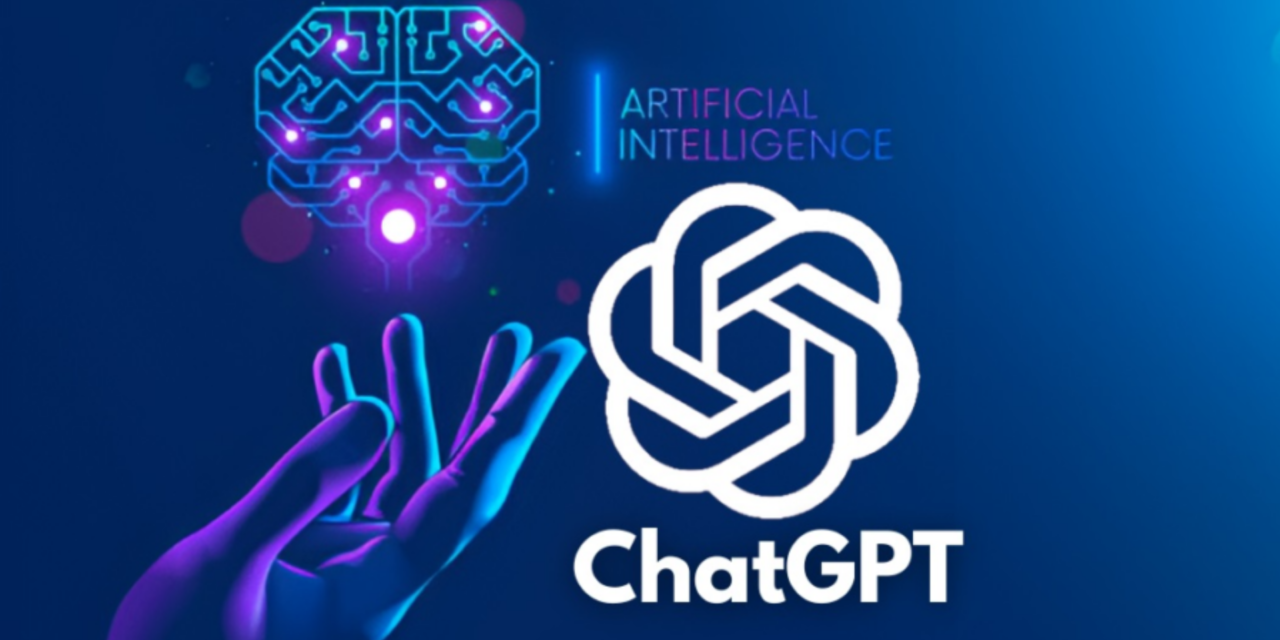Teachers are concerned about cheating and providing incorrect knowledge. “We need to talk,” stated Brett Vogelsinger. A student had just requested feedback on an essay. One passage in particular stood out. Vogelsinger, a ninth-grade English teacher in Doylestown, Pennsylvania, realized the youngster had not authored the article himself. He had made use of ChatGPT.
The artificial intelligence platform, made accessible for free by the startup OpenAI late last year, can respond to simple prompts and produce articles and tales. It is also capable of writing code.
It had over a million users inside a week. Microsoft intended to invest $10 billion in OpenAI by early 2023, and the value of OpenAI was estimated to reach $29 billion, more than double what it was in 2021.
It’s no surprise that other software companies have been racing to release competitive solutions. Anthropic, an AI startup created by former OpenAI workers, is testing Claude, a new chatbot. Google introduced Bard in early February, while Baidu, a Chinese search engine, produced Ernie Bot in March.
Many people have used ChatGPT out of curiosity or for enjoyment. I instructed it to come up with a ridiculous reason for not completing schoolwork in the style of a mediaeval proclamation. It said to me in less than a second, “Hark! Thy servant was attacked by a swarm of wicked leprechauns, who stole my pen and parchment, preventing me from doing my schoolwork.”
However, students can utilise it to cheat. ChatGPT heralds the start of a new wave of AI, one that is ready to revolutionise education.
In 2022, when Stanford University’s student-run newspaper polled students, 17 percent said they had used ChatGPT on assignments or examinations.Some acknowledged to passing off the chatbot’s work as their own. For the time being, these kids and others are most likely getting away with it. That’s because ChatGPT is frequently good.
“It can outperform a lot of middle school kids,” adds Vogelsinger. He might not have realised his pupil had used it if it hadn’t been for the fact that “he copied and pasted the prompt.”
Vogelsinger didn’t consider it cheating because the essay was still in process. Instead, he saw a chance. The student and AI are now collaborating. ChatGPT is assisting the learner in improving his writing and research abilities.
“[We’re] color-coding,” adds Vogelsinger. The student’s writing is highlighted in green. The ChatGPT sections are highlighted in blue. Vogelsinger is assisting the student in selecting a few lines from the AI to build on, while also allowing other students to interact with the programme. Most youngsters don’t use it on a daily basis, but a handful do. Vogelsinger believes the technology has assisted them in focusing their thoughts and getting started.
This tale ended happily. However, many instructors at schools and universities are unsure how to use ChatGPT and other AI technologies.
ChatGPT was banned on devices and networks in New York City public schools in early January. Educators were concerned that pupils who used it would not develop critical-thinking and problem-solving abilities. They were also afraid that the tool’s responses may be inaccurate or unsafe. Many other school districts in the United States and throughout the world have enacted similar restrictions.
According to the Stanford Daily, Keith Schwarz, a computer science professor, claimed he had “switched back to pencil-and-paper exams,” so students couldn’t utilize ChatGPT.
However, ChatGPT and its ilk might be of tremendous use to students globally. AI, like calculators for arithmetic or Google for data, may speed up writing, which frequently takes time and effort. Anyone can create well-formed phrases and paragraphs with these tools. How may this affect how we teach and learn?
CHATGPT’S GOOD, TERRIBLE, AND STRANGE.
ChatGPT has impressed its users. “It’s much more realistic than I thought a robot could be,” Avani Rao, a student in high school in California, says. She has not utilised the bot to complete her assignments. She has, however, led it to speak inventive or ridiculous things for fun. She requested it to explain addition in the voice of an awful villain, for example.
Given its performance, ChatGPT has the potential to level the playing field for students and those learning a second language or suffering with sentence composition. Because ChatGPT creates new, original content, the writing is not technically plagiarised.
ChatGPT may be used by students as a coach to help them improve their writing and grammar, as well as to explain complex topics. “It really will tutor you,” adds Vogelsinger, who had one kid return to him delighted because ChatGPT had clearly described a science class idea.
ChatGPT might be used by educators to assist in producing lesson plans, exercises, or evaluations – possibly even personalised to meet the needs or aspirations of particular students.
ChatGPT was put to the test by Xiaoming Zhai, a scientific education specialist at the University of Georgia in Athens, to see whether it could create an academic essay. He was impressed by how simple it was to summarise information and develop effective writing with the programme. “It’s really amazing,” he exclaims.
All of this sounds nice, but there are significant issues. Worryingly, ChatGPT and other related technologies frequently get things horribly wrong. They don’t get their information from databases. They are instead taught to develop fresh material that sounds natural. They remix language without comprehending it, which can result in obvious errors.
CNET came under criticism earlier this year for employing AI to generate scores of articles, many of which were riddled with inaccuracies. In an early advertising for the Bard chatbot, it claimed mistakenly that the James Webb Space Telescope had captured the first image of an exoplanet. In a Twitter chat, ChatGPT stated that the peregrine falcon was the fastest marine animal. Of course, a falcon is a bird and does not dwell in the sea.
ChatGPT is “confidently wrong,” according to Casey Fiesler, a technology ethics specialist at the University of Colorado Boulder. “There are errors and incorrect information.” She has created a number of TikTok videos highlighting the drawbacks of ChatGPT.
The majority of ChatGPT’s training data is from before September 2021, and it does not offer sources. Fiesler claimed in one video that when questioned about sources, it makes them up. Zhai, who sees the tool as a helper, noticed the same thing. When he requested ChatGPT for citations, it returned references that appeared to be correct. They didn’t, however, exist.
HOW CHATGPT FUNCTIONS?
If you understand how ChatGPT works, the errors make sense. “It doesn’t think. It lacks concepts. “It doesn’t have thoughts,” Emily M. Bender, a computational linguist at the University of Washington in Seattle, says.
ChatGPT was created utilising at least two different forms of machine learning. A big language model based on an artificial neural network is the most common form. This computational architecture, loosely inspired by how neurons in the brain interact, searches for statistical patterns in massive volumes of data.
By churning through massive quantities of text, a language model learns to anticipate what words will follow next in a sentence or phrase. It arranges words and phrases on a multidimensional map to show how they relate to one another. Words that frequently appear together, such as peanut butter and jelly, appear closer together on this map.
An artificial neural network’s size is measured in parameters. As the model learns, these internal values are adjusted. GPT-3 will be published by OpenAI in 2020. It was the largest language model ever created at the time, with 175 billion parameters. It had been trained on online content as well as digitised books and academic papers. According to Sasha Luccioni, a Montreal-based researcher at Hugging Face, a startup that creates AI tools, training text comprised transcripts of dialogue, essays, examinations, and more.
GPT-3.5 was created by OpenAI as an improvement on GPT-3. In early 2022, the business published InstructGPT, a fine-tuned version of GPT-3.5. OpenAI has included a new sort of machine learning this time. It is known as reinforcement learning with human input, because it involves individuals in the training process. These personnel scrutinise the AI’s output. People’s favourite responses are rewarded. Human input can also aid in the reduction of harmful, biassed, or unsuitable replies. This fine-tuned language model underpins ChatGPT, which is publicly accessible. Since March, paid customers have received responses driven by GPT-4, a larger language model.
During the development of ChatGPT, OpenAI incorporated more safety constraints to the model. It will refuse to respond to sensitive requests or offer potentially damaging information. However, this step creates additional concern: Whose ideals are encoded into the bot, including what it is and is not permitted to say?
OpenAI does not provide specifics on how it created and trained ChatGPT. The corporation has not made its code or training data public. This disappoints Luccioni since it implies the tool will be unable to benefit from the collective wisdom of the AI community. “I’d like to understand how it works so I can improve it,” she adds.
When approached for comment on this topic, OpenAI sent a response from an unidentified spokeswoman. “We made ChatGPT available as a research preview to learn from real-world use, which we believe is a critical part of developing and deploying capable, safe AI systems,” the company stated in a statement. “We are constantly incorporating feedback and lessons learned.” Indeed, despite the safety regulations, some experimenters have persuaded the bot to utter biassed or improper things. As these issues arise, OpenAI has been fixing the tool.
ChatGPT is not yet complete. OpenAI requires real-world data. The people who use it are the test subjects. Notes Bender: “You are working for OpenAI for free.”
ACADEMIC PERFORMANCE OF CHATGPT
How effective is ChatGPT in a classroom setting? Catherine Gao, a doctor and medical researcher at Northwestern University’s Feinberg School of Medicine in Chicago, is part of one of the teams of researchers testing the instrument.
Gao and her colleagues collected 50 authentic abstracts from medical journal research publications and then requested ChatGPT to construct 50 phoney abstracts after supplying the titles of the studies and the journal names. The researchers questioned persons who were accustomed with reading and producing research articles of this sort to identify which were which.
“I was pleasantly surprised by how realistic and convincing the generated abstracts were,” adds Gao. One-third of the AI-generated abstracts were misidentified as human-generated by the reviewers.
Will Yeadon and colleagues explored if AI tools could pass a college exam in another study. Yeadon, a physics professor at Durham University in England, chose a test from one of his classes. Students must write five short essays about physics and its history for the exam. Students average 71 percent, which he claims is comparable to an A in the United States.
Yeadon utilized the tool davinci-003, which is a close relative to ChatGPT. It produced ten sets of exam answers. The responses were then assessed by Yeadon and four other teachers using their usual criteria. The AI received an average score of 71%. Unlike human students, it did not have any extremely low or extremely high marks. It wrote consistently well, but not superbly. According to Yeadon, for students who consistently have poor writing grades, it “will write a better essay than you.”
These graders were aware that they were looking at AI work. Yeadon intends to use work from the AI and students in a subsequent research without telling the graders which is whose.
TOOLS FOR DETECTING CHEATING
Other AI technologies may be useful when it’s uncertain if ChatGPT authored something or not. These technologies often train on AI-generated text and, on sometimes, human-generated text. They can tell you how probable it is that the text was generated by AI. Many of the present tools were trained on earlier language models, but developers are working hard to release new, enhanced tools as soon as possible.
Originality.ai sells access to a tool that was trained on GPT-3. According to founder Jon Gillham, in a test of 10,000 samples of words created by models based on GPT-3, the tool properly identified 94 percent of them as AI-generated. When ChatGPT was released, his team evaluated a smaller sample set of 20 samples. These were developed using ChatGPT and other models based on GPT-3 and GPT-3.5, and were each just 500 words long. According to Gillham, the technology properly classified 97 percent of them as AI-generated.
OpenAI developed its own free tool for detecting AI writing in late January 2023, but warned that it was “not fully reliable.” The business is working on adding watermarks to its AI writing, which would identify the result as machine-generated, but no details are provided. Gillham offers one such solution: The AI scores several distinct viable words for each slot as it creates text. He claims that if its developers instructed it to always chose the word rated third rather than first at key times in its output, those words may work as a fingerprint.
As AI authoring tools develop, so will the techniques for sniffing them out. Eventually, a watermark may be the sole method to determine real authorship.
CHATGPT AND THE WRITING FUTURE
We will, without a doubt, have to adjust to a future in which machines can write for us. However, educators have made similar modifications in the past. As Rao, a high school student, points out, Google was formerly viewed as a danger to education since it allowed users to rapidly check up facts. Teachers reacted by developing teaching and assessment tools that were less reliant on memory.
Teachers may have to reconsider how they educate and assess now that AI can produce essays and tales. “We might have to change our minds about what is and isn’t cheating,” Rao adds.
Some professors will restrict pupils’ access to technology in order to prevent them from utilising AI. Teachers are already asking children to write up responses or essays at home, according to Vogelsinger. “I think those assignments will have to change,” he says. He hopes, however, that this does not discourage children from writing.
Zhai agrees that teaching pupils to write without the assistance of AI will remain crucial. This is due to the fact that “we really care about a student’s thinking,” he emphasises. Writing is also an excellent technique to demonstrate thoughts. He claims that while ChatGPT can help students organise their thoughts, it cannot think for them
Zhai agrees that kids still learn fundamental maths even when they have calculators (which are often on the phones they never leave home without). Once pupils have mastered fundamental maths, they may use a calculator to assist them with more complicated tasks.
Similarly, once students have learnt to structure their thoughts, they may use a technology like ChatGPT to help them write an essay or story. Vogelsinger does not see writing workshops becoming into editing sessions where students brush up on AI content. He envisions students performing prewriting or brainstorming, then employing AI to produce portions of a draught and revising and refining from there.
Though he is concerned about having to adjust his teaching to yet another new tool, he says he is “having fun” figuring out how to use the new technology with his kids.
Rao does not envision AI ever replacing human-generated tales and other writings. Why? “The reason those things exist is not only because we want to read it, but also because we want to write it,” she explains. People will always desire to express themselves.





